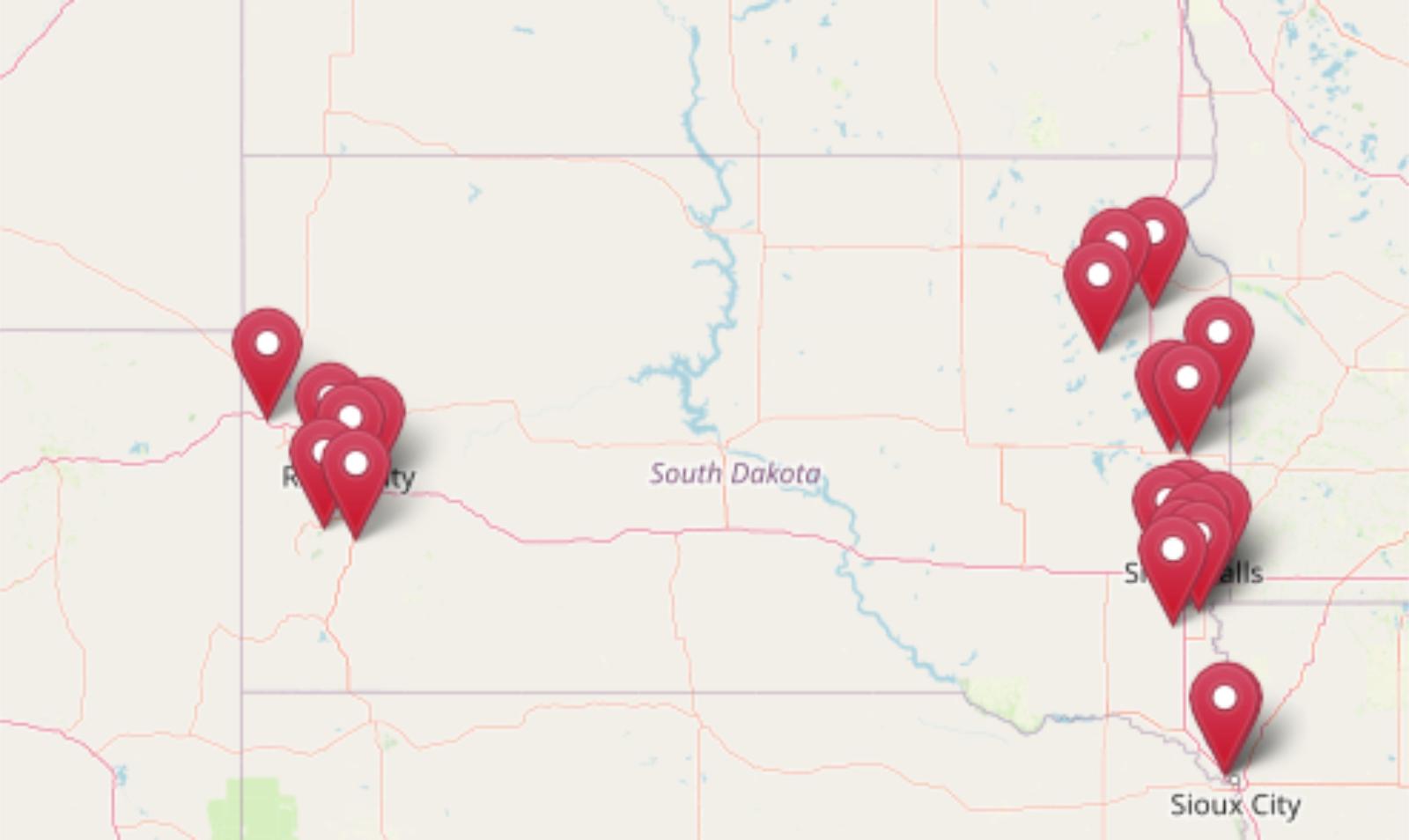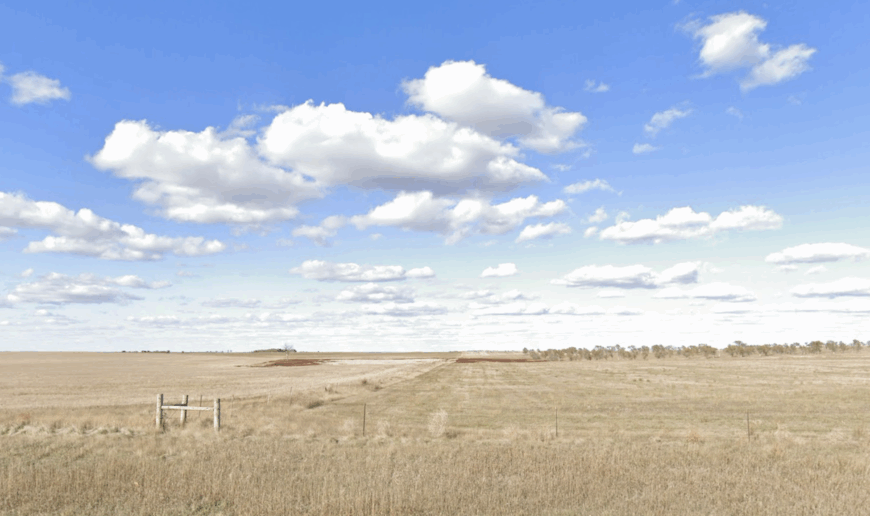
The farther you head into northwest sections of South Dakota, the more the map thins out. The prairie stretches in straight lines, horizons run unbroken, and towns appear as little more than dots between cattle guards. It’s not empty space, but a kind of abundance—of silence, of sky, of distance.
This is where places like Ralph still hold on, a scattering of homes wrapped in grassland that rolls endlessly toward the buttes. A few miles away, Ludlow sits like a ghost of itself, a handful of buildings and memories clinging to the open range. In both, the land dictates the tempo, not the clock.
Every community on this list is small, but each has its own gravity. They survive not on size or commerce, but on persistence—the ranching families who work the same soil, the churches where neighbors gather, the landmarks that make sense only to locals. These are towns that prove endurance is its own identity.
For travelers, the reward is not a lineup of attractions but the scale of the landscape itself. Wide skies change color by the hour, the prairie breathes with the wind, and solitude is measured in miles. Here, seclusion isn’t a choice—it’s the ground you stand on.
25. Ralph: Prairie Stillness
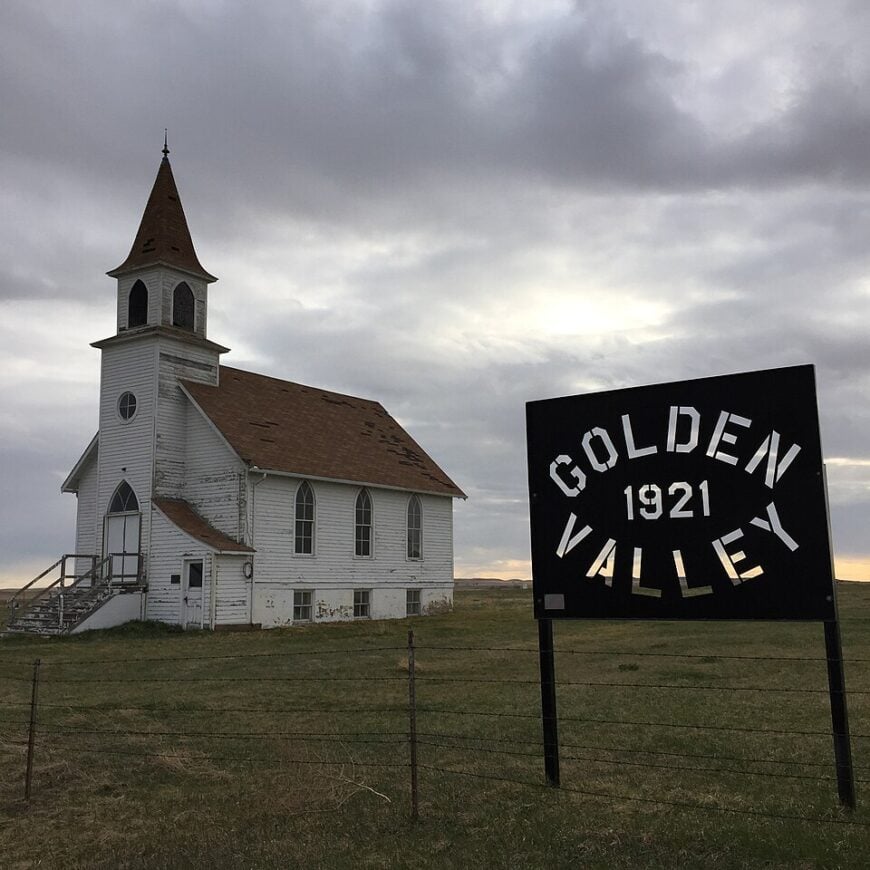
Ralph lies deep in the wide prairies of northwestern South Dakota, where the horizon stretches so far it seems to swallow the sky. The town itself is little more than a cluster of homes and roads, surrounded by grasslands that roll on in quiet solitude.
Ranching and farming form the backbone of the economy, with cattle and crops shaping the rhythm of daily life. Visitors won’t find theaters or squares here—what draws people in is the stark beauty of open land, the sound of wind through the grass, and skies painted with stars at night.
Hunting, horseback riding, and long drives across backroads offer simple but meaningful ways to connect with the land. Ralph holds a kind of stillness that reminds you how rare true quiet can be in the modern world.
Where is Ralph?

Ralph is an unincorporated community in the wide ranch country of northwestern South Dakota, set within Harding County. It’s about 25 miles southeast of Buffalo, the county seat, reached by U.S. Highway 85 before turning onto smaller gravel roads.
The drive is long and open, with prairie grasslands stretching toward distant buttes and almost no sign of towns along the way. By the time you reach Ralph, it feels like the horizon has gathered you in, a place where seclusion is measured in miles of sky.
24. Ludlow: A Forgotten Outpost
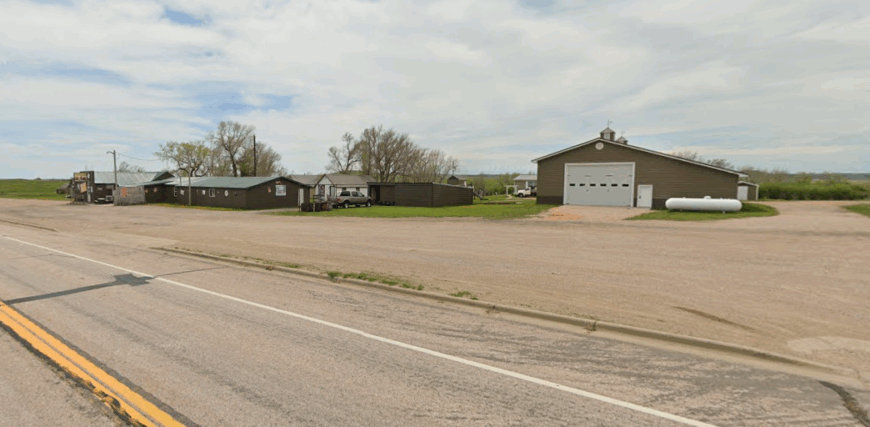
Ludlow feels less like a town and more like a memory etched into the wide grasslands of Harding County. Once a busier stop for ranchers and travelers, it has dwindled to just a handful of buildings and the old Ludlow Hall where dances and gatherings once echoed late into the night.
Today, the economy revolves around sprawling cattle ranches, with families spread far apart across miles of open prairie. Visitors come mostly by accident, finding quiet roads that lead to endless sky and the faint outlines of history in weathered structures.
The land offers hunting, long drives, and the kind of starlit nights that remind you how far away cities truly are. Ludlow stays with you not because of what happens there, but because of how its silence feels like stepping back in time.
Where is Ludlow?
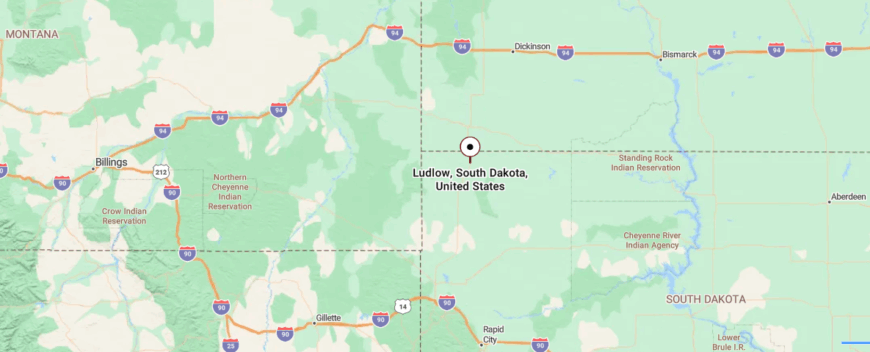
Ludlow sits in the far northwest corner of South Dakota, tucked into Harding County near the Montana border. It’s nearly 50 miles north of Belle Fourche, reached directly by U.S. Highway 85, a paved route that runs straight across the prairie.
The approach is marked more by wind and wide range than by traffic, with distant ridgelines slowly breaking the horizon. By the time you arrive, Ludlow feels like a small dot on the plains where solitude is the strongest presence.
23. Glad Valley: A Crossroads of Quiet
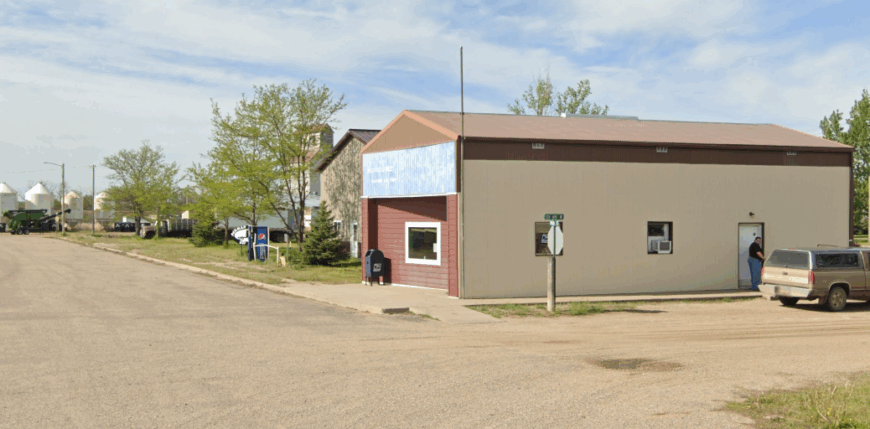
Glad Valley sits on the open prairie, where the wind never seems to rest and the horizon feels endless. The town itself is little more than a crossroads community, with wide fields and cattle ranches forming the backbone of daily life.
You hear the hum of trucks on distant highways, the lowing of cattle, and the steady rustle of grass that frames each day. Hunting and horseback riding are common pastimes, while long drives through Ziebach County reveal both solitude and sweeping beauty.
The economy remains tied to ranching and the land, just as it has for generations. Glad Valley leaves an impression not through monuments or bustle, but through the quiet power of space and sky.
Where is Glad Valley?
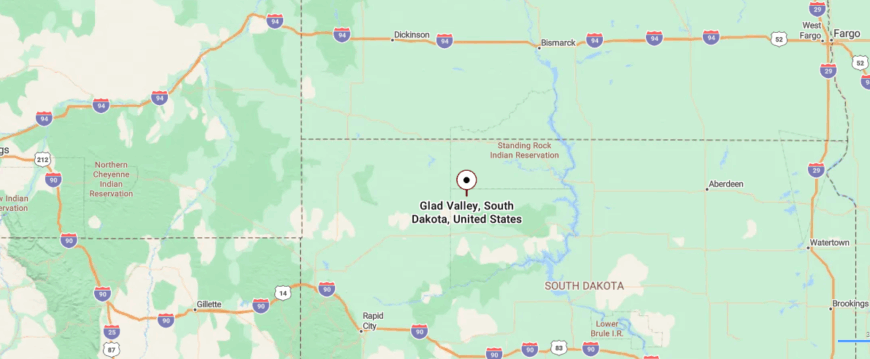
Glad Valley rests in Ziebach County, deep in the northern plains of South Dakota. It lies about 12 miles west of Isabel along U.S. Highway 212, a route that carries you through open prairie with little to break the view.
The drive is steady and sparse, with fencelines and sky stretching endlessly in both directions. By the time you reach Glad Valley, the sense of space feels so wide it almost swallows the town whole.
22. Redig: On the Edge of the Border
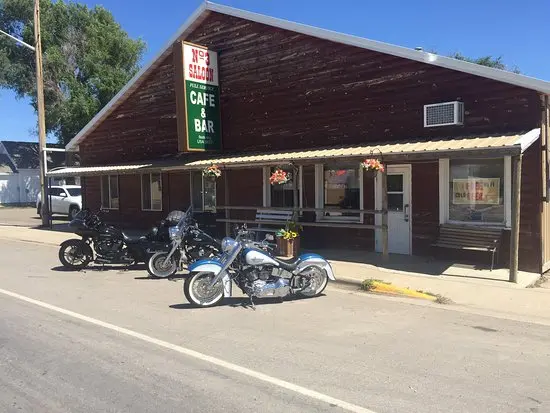
Redig is the kind of place where everyone knows the rhythm of ranch life, because nearly everyone’s tied to it. The town itself is small—just a scattering of buildings along Highway 85—but its strength comes from the ranching families who’ve worked the land for generations.
Neighbors gather at church, community suppers, or cattle auctions, where business and fellowship often blend together. The land around Redig is wide and rugged, offering hunting, horseback riding, and the kind of quiet that makes conversation linger longer.
Ranching is the backbone of the economy, with cattle herds shaping both the workday and the year’s calendar. What stays with you is not just the open prairie, but the sense of belonging that comes from people who live by the same steady rhythm.
Where is Redig?
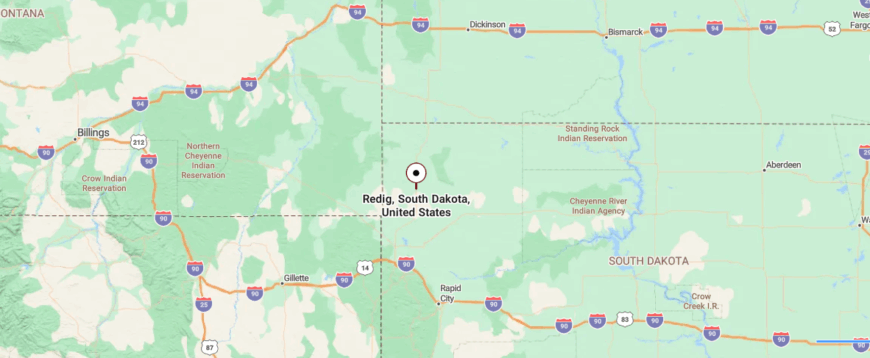
Redig is a ranching community in Harding County, sitting in the northwestern corner of South Dakota. It’s about 30 miles north of Buffalo along U.S. Highway 85, where the pavement rolls over open prairie and pastures.
The road feels endless, with grasslands fading into distant buttes under a wide sky. By the time you reach Redig, the quiet is so deep it seems carried by the wind itself.
21. Meadow: A Prairie Refuge
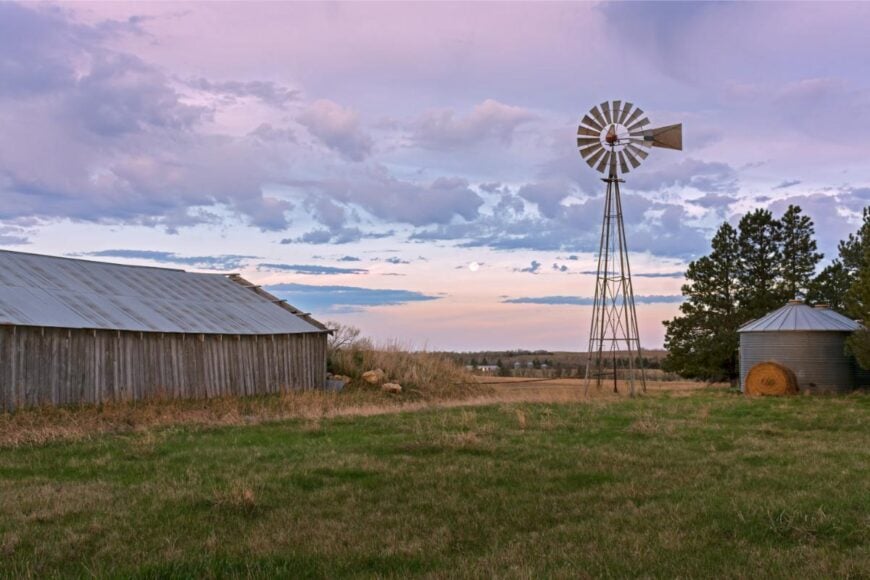
Meadow began as a railroad stop in the early 1900s, a small settlement built to serve travelers and ranchers moving through the vast prairies. Though trains no longer define its rhythm, the town still carries traces of that frontier spirit in its simple streets and open surroundings.
Ranching drives the economy, with cattle and horses shaping the pace of daily life as they have for more than a century. Visitors passing through find long stretches of grassland, endless skies, and the kind of sunsets that seem to last forever.
Community life is rooted in churches and local gatherings, where neighbors share news, meals, and traditions. Meadow leaves its impression as a place where history hasn’t vanished but quietly lives on in the land and the people.
Where is Meadow?
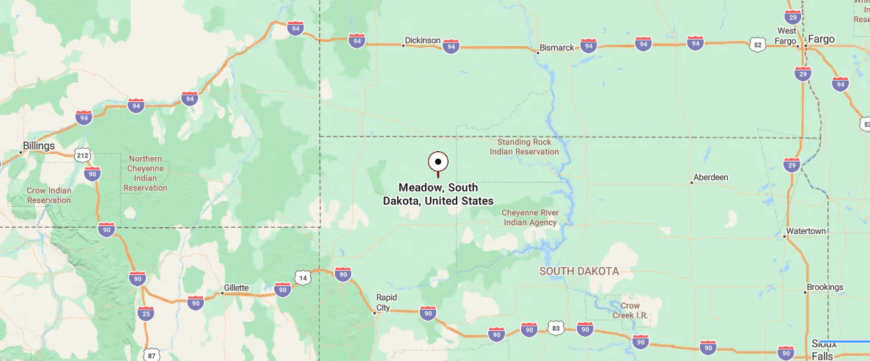
Meadow sits in Perkins County in the wide northern plains of South Dakota, surrounded by open ranchland. It’s about 20 miles east of Bison, reached by state highways that stretch in long, straight lines across the prairie.
The approach feels steady and unbroken, with little more than sky, grass, and the occasional windmill. By the time you arrive, Meadow feels less like a destination and more like a pause in the vastness around it.
20. Red Scaffold: Quiet by the River
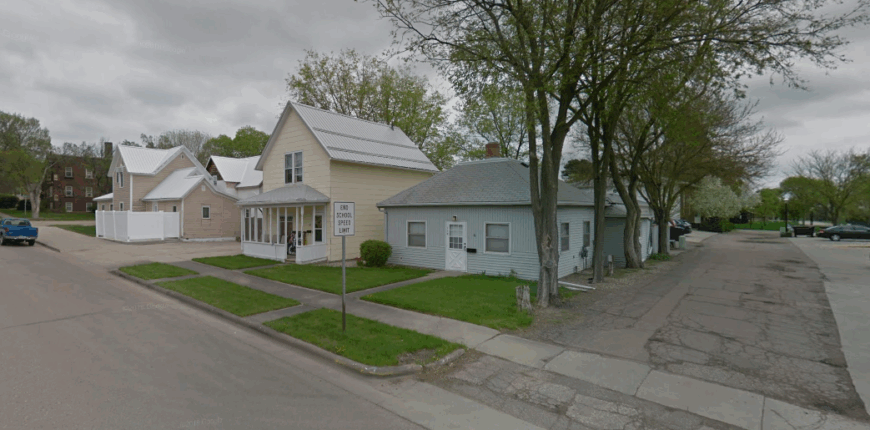
Red Scaffold sits quietly on the Cheyenne River Reservation, where the prairie rolls wide and the sky feels as if it could hold every season at once. The land is dotted with buttes and winding draws, carrying the scent of sagebrush and the sound of wind that never fully stops.
Life here is shaped by tradition and connection, with families holding close to their roots and gatherings that honor culture as much as community. Ranching and tribal programs form the backbone of the economy, steadying the rhythm of daily life.
Visitors come for the land itself—hunting, riding, and the chance to experience silence deeper than most places allow. Red Scaffold lingers in memory as a place where the earth and sky seem to tell stories older than the town itself.
Where is Red Scaffold?
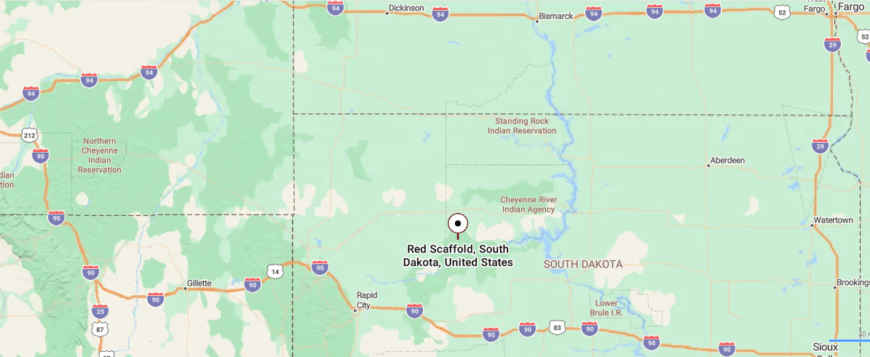
Red Scaffold is located in Ziebach County on the Cheyenne River Reservation in central South Dakota. It’s about 25 miles south of Dupree, reached by reservation roads that wind off U.S. Highway 212 and narrow into gravel stretches.
The journey passes through rolling prairie and quiet draws, where the land feels vast and mostly untouched. By the time you arrive, Red Scaffold feels like a hidden pocket of the plains, remote and steady in its silence.
19. Green Grass: Rooted in Tradition

Green Grass lies on the Cheyenne River Reservation, where the prairie stretches in every direction and the sky feels close enough to touch. The name itself reflects the land—rolling fields that turn brilliant green after summer rains and carry the scent of earth and sage on the wind.
Life here is deeply tied to Lakota culture, with traditions, gatherings, and community ties forming the backbone of daily rhythm. Ranching and tribal programs help sustain the economy, but it’s the ceremonies, powwows, and shared history that give the place its pulse.
Visitors who come find not so much attractions as an experience of wide-open land and enduring culture. Green Grass leaves you with the feeling that the land and its people share a bond that time cannot break.
Where is Green Grass?

Green Grass lies in Dewey County on the Cheyenne River Reservation, set in the central northern plains of South Dakota. It’s about 15 miles east of Eagle Butte, reached by smaller reservation roads that branch off U.S. Highway 212.
The drive rolls past open prairie and gentle rises, where the horizon seems to shift but never close in. By the time you arrive, Green Grass feels like a quiet stretch of land held wide open by sky and silence.
18. Strool: The Vanished Settlement
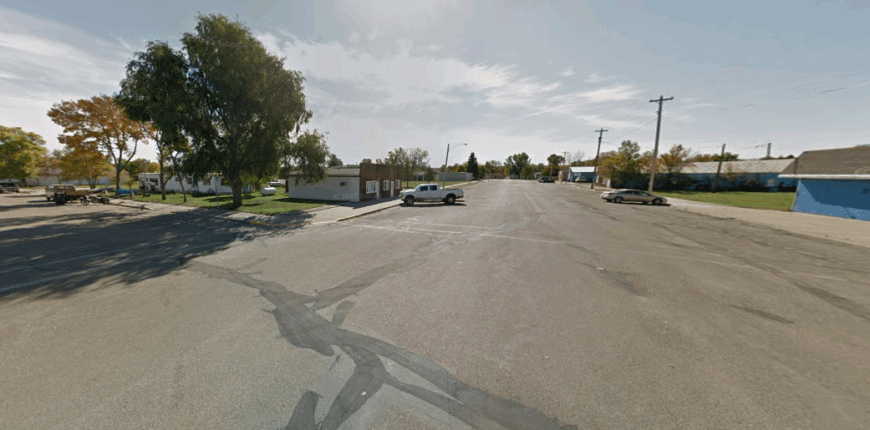
Strool isn’t a town you’ll find on a current map—it’s a memory of what once was, a settlement that grew in the early 1900s and then slowly faded away. Old-timers still tell stories of its dance hall, stores, and community gatherings that lit up the prairie nights.
What remains today are faint traces on the land and the stories carried by ranching families who remember its short-lived heyday. The surrounding grasslands still define life here, with cattle, open ranges, and hunting shaping the economy and lifestyle.
Visitors who search it out find silence where a town once stood, interrupted only by wind through the prairie grass. Strool lingers like a ghost, reminding you how quickly a place can rise, fall, and yet never truly vanish from memory.
Where is Strool?

Strool once stood in Perkins County, in the northwestern plains of South Dakota, though today it survives only as a memory of a vanished town. It was about 20 miles north of Bison, reached by dirt roads that threaded across rolling ranchland.
Travelers would have passed endless prairie before coming to its cluster of buildings, a small hub in a sea of grass. Now, what remains is open land, where the silence makes it hard to imagine a town was ever there.
17. Usta: A Prairie Whisper
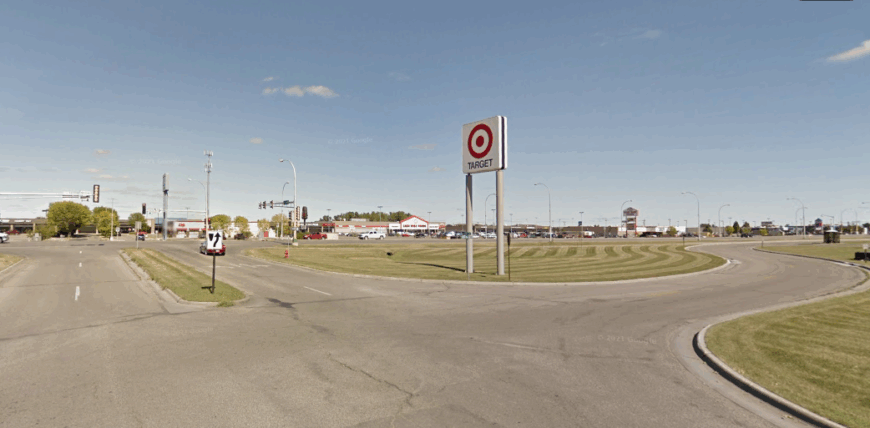
Usta may be just a dot on the Perkins County map, but its strength comes from the ranching families who keep life steady on the surrounding prairies. The town itself is little more than a cluster of homes and outbuildings, yet neighbors still gather for church, school events, and community suppers that anchor the social calendar.
Ranching drives the economy, with cattle herds and open land shaping both the workday and the seasons. Visitors find simplicity here—long drives under wide skies, the smell of cut hay, and evenings that quiet down to nothing but crickets.
Though small, Usta carries a sense of resilience, where families measure time by generations rather than years. It’s the kind of place that shows how community can thrive even when the town itself is barely more than a name on the road.
Where is Usta?
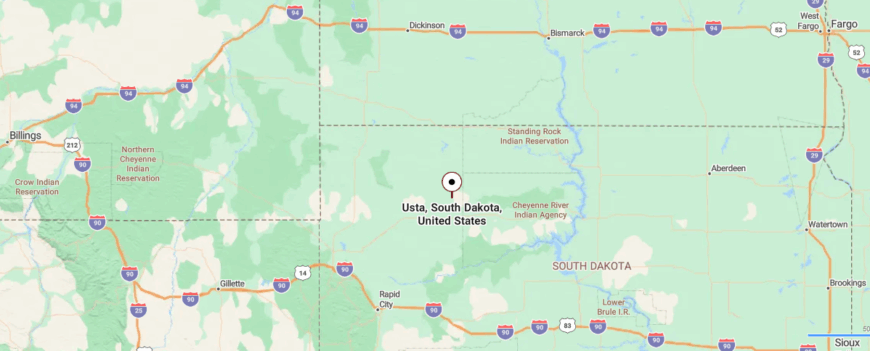
Usta is an unincorporated community in Perkins County, about 23 miles south of Lemmon. It lies directly on South Dakota Highway 73 (SD-73), the main north–south route through the county.
Travelers reach Usta by following SD-73 across open ranchland, with few interruptions other than windmills and pastures. By the time you arrive, the town feels more like a quiet marker along the highway than a destination, framed entirely by prairie and sky.
16. Chance: A Faint Prairie Outpost
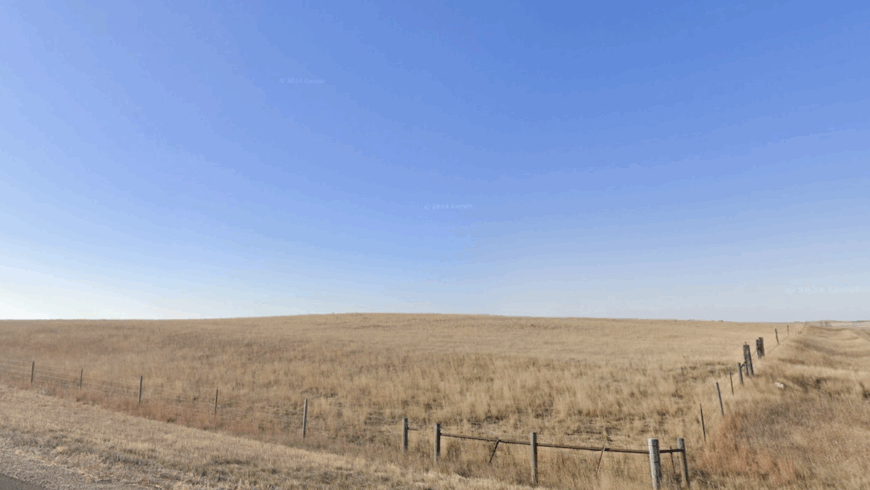
Chance is the kind of community that makes you double-check the map to be sure it’s there. Established as a rural post office stop in the early 20th century, it never grew beyond a scattering of ranches, barns, and weather-beaten outbuildings. Today it survives mostly in memory and in the ties of ranching families who keep the land productive.
Ranching sets the rhythm here, with cattle and hay defining the workday more than any clock. Community life has long revolved around neighbors lending a hand during branding season, church gatherings, and school events in nearby towns. Chance itself feels like a crossroads between past and present, where continuity is measured by generations on the same acres.
For visitors, Chance offers no storefronts or attractions. Its appeal lies in the seclusion—the endless prairie, the sigh of wind across grass, and the reminder that some places endure not through growth but through steadiness.
Where is Chance?
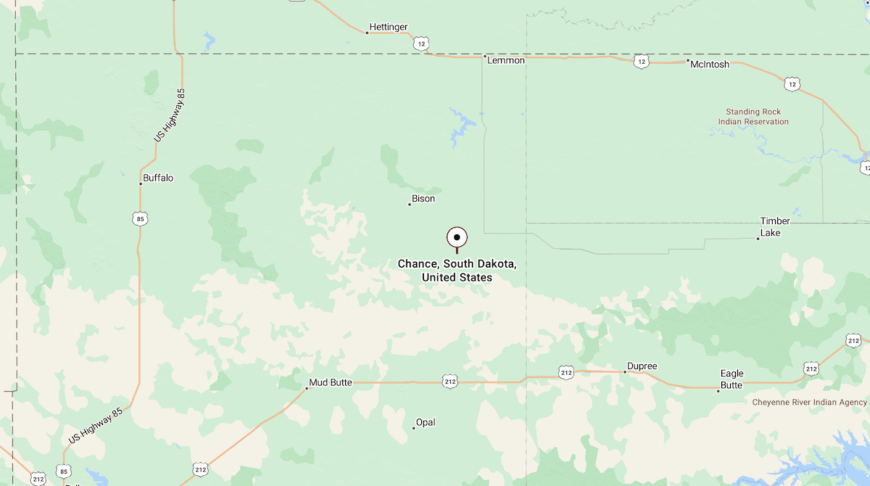
Chance is located in Perkins County, in the far northwestern plains of South Dakota. It sits about 12 miles east of Prairie City, along gravel roads that branch off State Highway 20.
The approach is defined by grassland and sky, with fencelines stretching for miles and little to signal the presence of a settlement. By the time you reach Chance, the landscape itself feels like the community’s defining feature.
15. Lantry: Whistle Stop
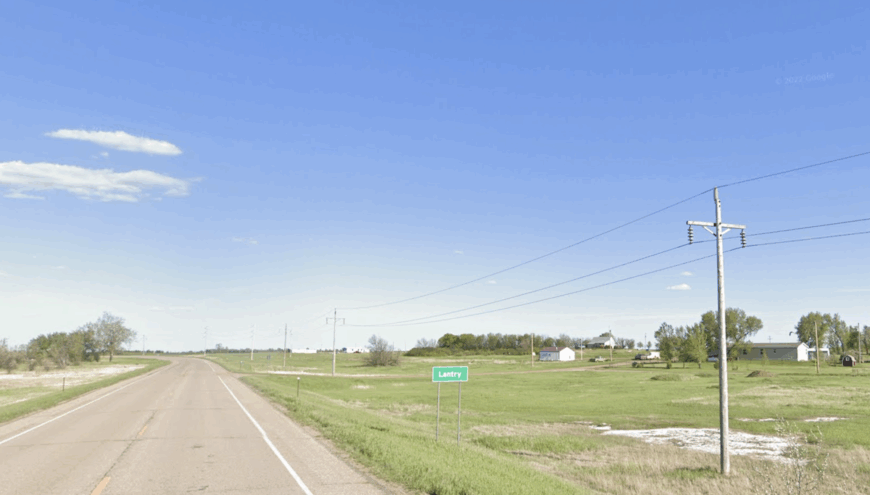
Lantry began as a siding on the Minneapolis and St. Louis Railroad in the early 20th century, serving as a small hub for ranchers and freight moving across the plains. Though the trains are gone, the settlement remains a scattering of homes and ranches that carry its name forward.
Daily life is tied closely to ranching and to the rhythms of reservation country. Families balance work on the land with school, church, and community ties in Eagle Butte and surrounding towns. Lantry itself is modest, but its role as a gathering point still matters for those who live nearby.
Travelers won’t find much in the way of services, but what Lantry offers is the sweep of open country—prairie grass bending in the wind, ridges in the distance, and skies that seem to reach forever.
Where is Lantry?
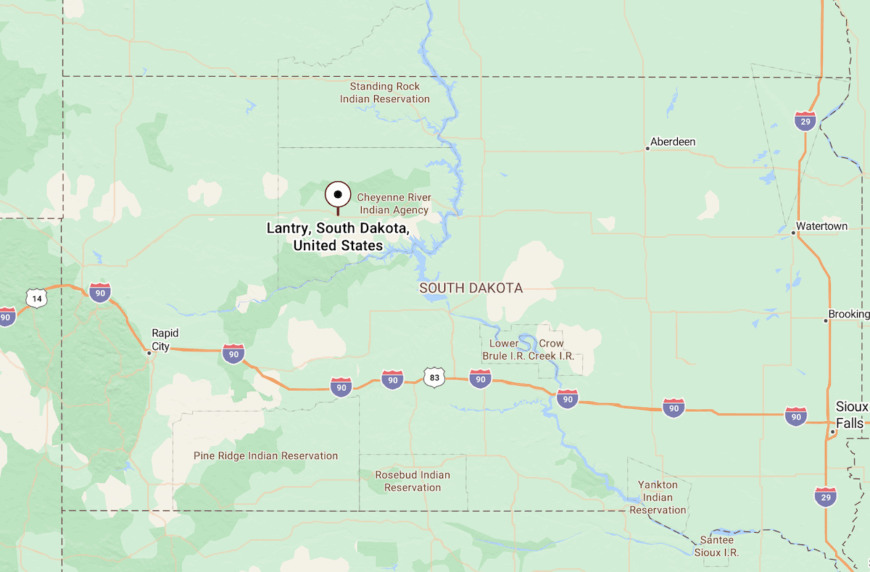
Lantry is located in Dewey County, on the Cheyenne River Reservation in north-central South Dakota. It lies along U.S. Highway 212, about 12 miles west of Eagle Butte.
The approach is a straight drive across wide grassland, with little to mark the way but fence lines and the horizon. By the time you reach Lantry, the sense of space has already set in, leaving the community a quiet marker in the middle of the prairie.
14. Red Elm: Life by the Creek
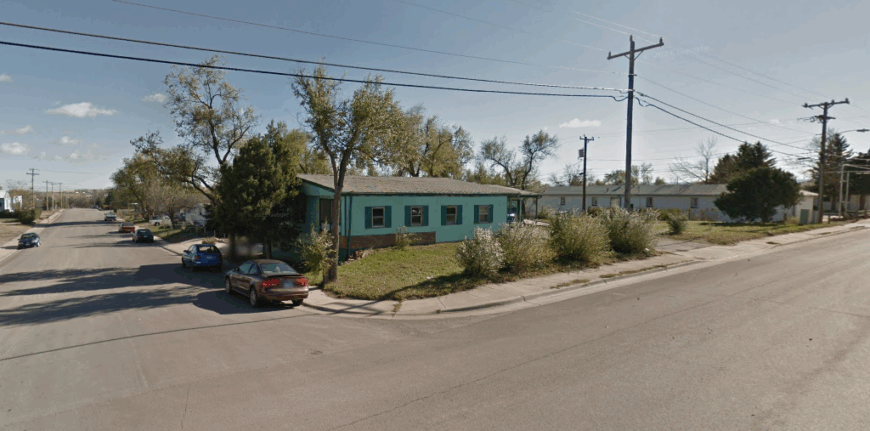
Red Elm lies on the Cheyenne River Reservation, where the prairie stretches in every direction and the sky seems to change colors by the hour. Wind moves constantly here, carrying the scent of sage and the sound of grass rustling like a low song.
The community is small, built on strong family ties and gatherings that keep tradition alive in an otherwise quiet setting. Ranching and tribal programs shape much of the economy, while hunting and riding across the open plains remain part of daily rhythm.
Visitors won’t find busy streets or attractions, but rather the stillness of land that feels timeless and rooted. Red Elm stays with you because of how it makes the ordinary—wind, light, and silence—feel extraordinary.
Where is Red Elm?
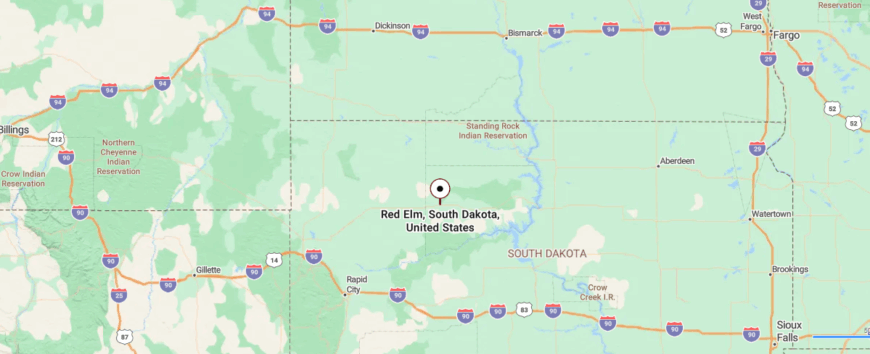
Red Elm sits in Dewey County on the Cheyenne River Reservation, in the wide plains of north-central South Dakota. It’s about 20 miles east of Eagle Butte, reached by reservation roads that branch off U.S. Highway 212 and wind through open prairie.
The drive is long and steady, with little more than grasslands, sky, and the rhythm of the road. By the time you arrive, Red Elm feels like a quiet stop woven into the vast expanse of the plains.
13. Maurine: Ranchland Solitude
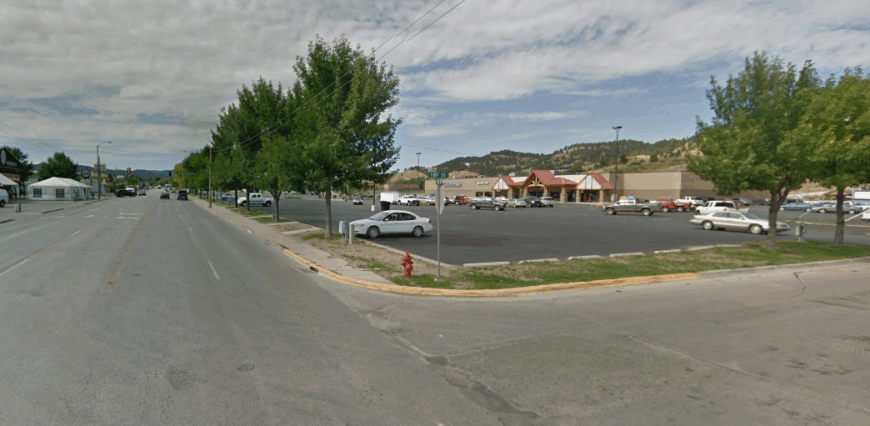
Maurine feels more like a landmark on the prairie than a town, a place travelers recall by the old post office and scattered ranch houses. Locals remember when it was busier, a gathering point for surrounding families who came in for mail, supplies, and a word with neighbors.
Today, the land carries most of the weight—cattle graze across open ranges, and long days of ranch work define the rhythm of life. Visitors passing through find little more than quiet roads, fencelines, and the endless sweep of sky overhead.
Yet for those who live here, community is measured not by size but by shared work, trust, and familiar faces. Maurine stays in memory as one of those prairie towns that whispers more in its absence than many places do in their presence.
Where is Maurine?
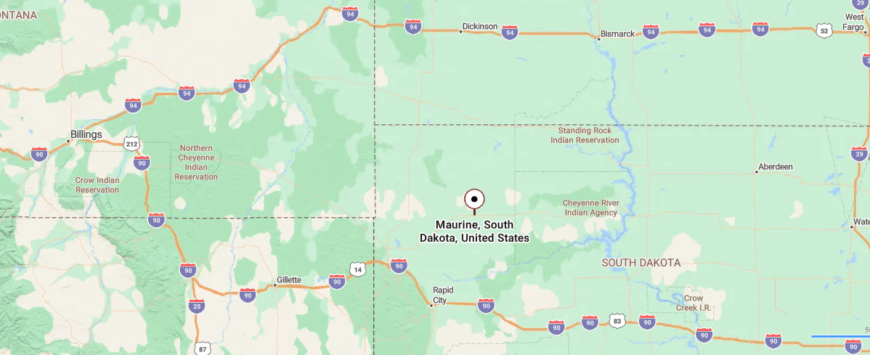
Maurine rests in Meade County, in the northwestern plains of South Dakota. It’s about 40 miles northwest of Faith, reached by long two-lane stretches that cut through ranchland and prairie.
The approach is marked by wide horizons and little interruption, with only wind and fence lines to guide the way. By the time you reach Maurine, the land feels so open that the town seems folded into the sky itself.
12. Thunder Hawk: Near the Border
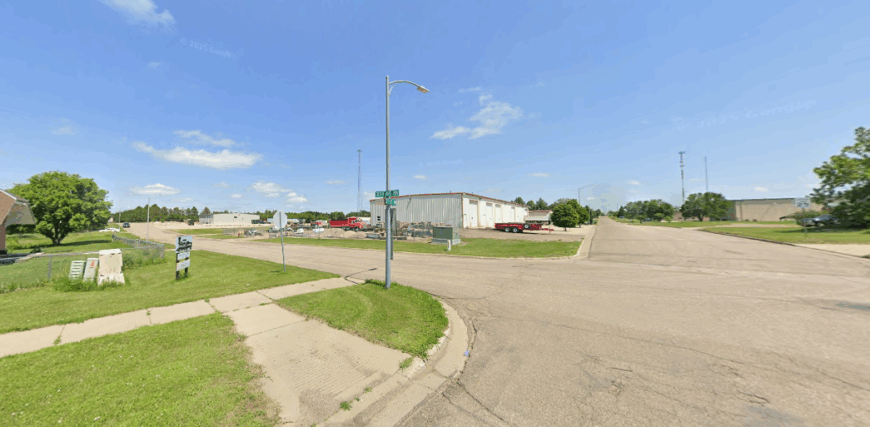
Thunder Hawk rests near the North Dakota line, a small community where ranchland and wide horizons set the backdrop for daily life. The town’s name carries strength, echoing both the prairie storms that roll across the sky and the cultural roots tied to the land.
Neighbors come together at churches, school events, and local gatherings that stitch the community tighter than its small size suggests. Ranching drives the economy, with cattle herds and hay fields marking the seasons more clearly than any calendar.
Hunters and travelers sometimes pass through, finding quiet roads and skies filled with hawks that seem to circle endlessly overhead. Thunder Hawk leaves its impression through the resilience of its people, who make a small place feel larger than it is.
Where is Thunder Hawk?
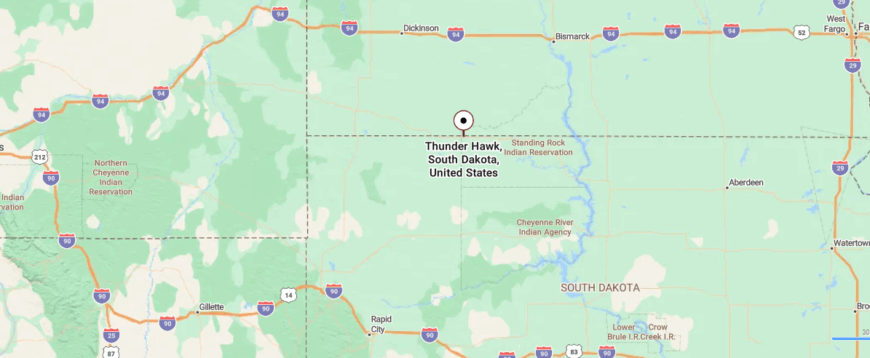
Thunder Hawk lies in Corson County in the far northwestern corner of South Dakota, just a few miles from the North Dakota border. It’s about 20 miles west of McIntosh, reached by U.S. Highway 12 as it runs straight across sweeping prairie.
The road feels endless, with grasslands stretching flat and open under a wide horizon. By the time you arrive, Thunder Hawk carries the stillness of a place that seems balanced between earth and sky.
11. Thunder Butte: Sacred and Secluded
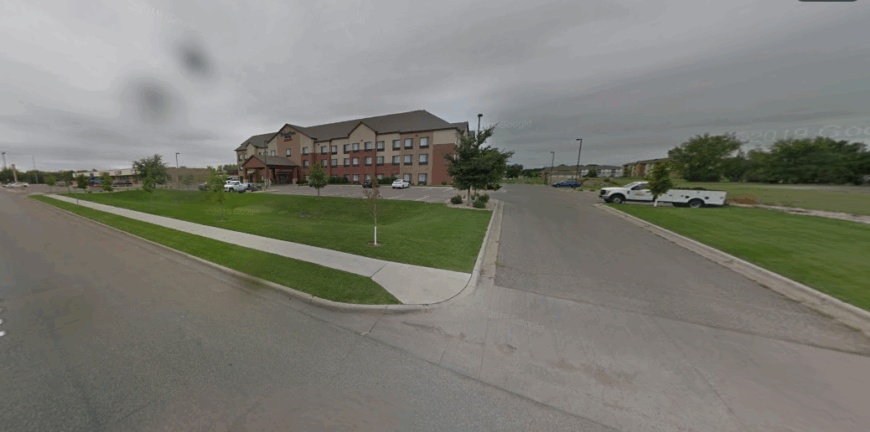
Thunder Butte takes its name from the striking landmark that rises from the prairie, long regarded as sacred ground by the Lakota people. The butte has stood as both a navigational marker and a place of stories, linking the present to generations who lived by its shadow.
Around it, life unfolds through ranching and the steady cycles of cattle and hay, forming the core of the local economy. The land invites hunters, riders, and travelers who want to see one of the most recognizable peaks on the Great Plains.
Community life is modest, tied to family gatherings, churches, and traditions that stretch back farther than the town itself. Thunder Butte endures as a reminder that history isn’t only written in books—it’s etched into the land itself.
Where is Thunder Butte?
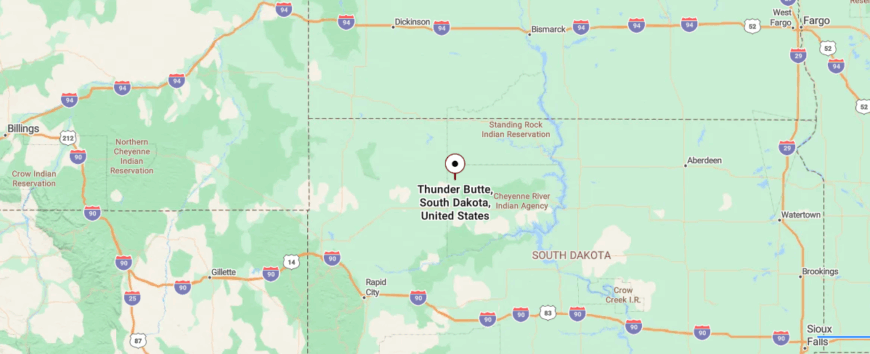
Thunder Butte rises in Ziebach County, standing as one of the most recognizable buttes on the Great Plains. The landform is about 20 miles south of Meadow and roughly 22 miles southeast of Bison, accessible by gravel roads that branch off from U.S. Highway 212.
The drive cuts through rolling prairie where the butte slowly grows on the horizon. By the time you approach, it dominates the view, anchoring the landscape in a part of South Dakota where landmarks are few and skies are wide.
10. Reva’s Rustic Retreat
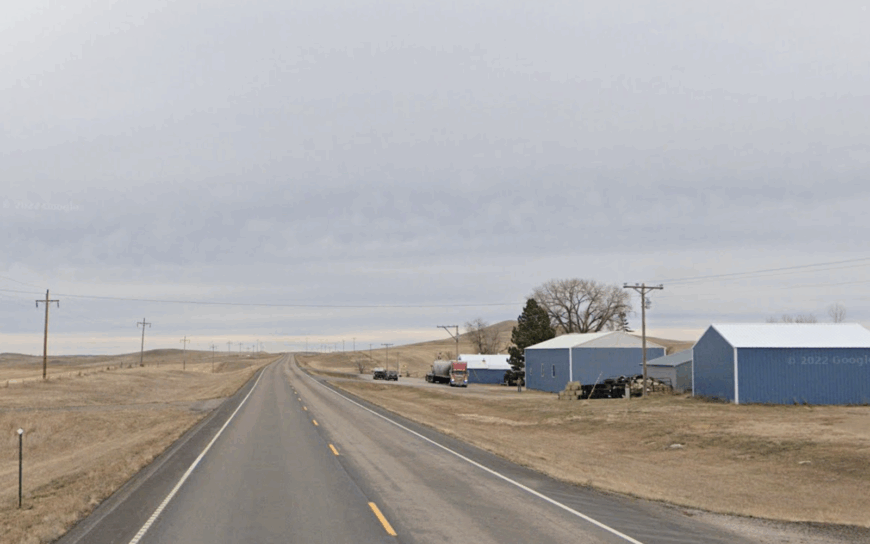
With a population of less than 100 people, Reva is an unincorporated community that truly embodies the essence of seclusion. I love how its vast open spaces stretch as far as the eye can see, offering a sense of freedom that’s hard to find elsewhere.
The area is rich with opportunities for outdoor enthusiasts, including hiking, horseback riding, and wildlife viewing in the nearby Custer National Forest. Agriculture, particularly ranching, is the mainstay here, with local ranchers tending to expansive herds of cattle.
What makes Reva so secluded is its remote location and minimal development, providing a genuine escape from the modern hustle and bustle.
Where is Reva?
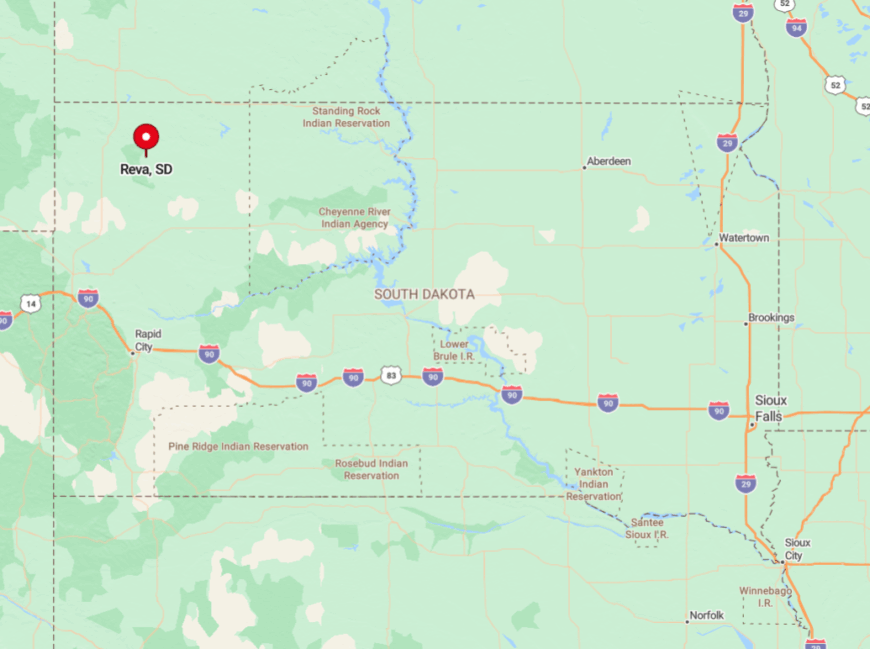
Reva is located in Harding County, along South Dakota Highway 20 (SD-20) in the Slim Buttes area. It sits about 16 miles east of Camp Crook and 38 miles west of Buffalo, making it one of the most remote communities in the state.
The approach runs through prairie grasslands and into the Custer Gallatin National Forest (Sioux Ranger District), where buttes and pine breaks interrupt the horizon. Reva’s isolation is defined by the land itself — long drives, quiet ranges, and scenery that feels both rugged and timeless.
9. White Owl: Nestled in Nature

White Owl is another hidden sanctuary with a small population that barely reaches double digits. I appreciate how this tiny community is enveloped by the natural beauty of the South Dakota plains, offering a peaceful retreat for those who cherish solitude.
The area is perfect for birdwatching and enjoying the serene landscapes that change with the seasons. Agriculture is the primary industry here, with local farms dotting the countryside.
The low housing density and the surrounding natural features make White Owl a place where you can truly disconnect from the outside world.
Where is White Owl?
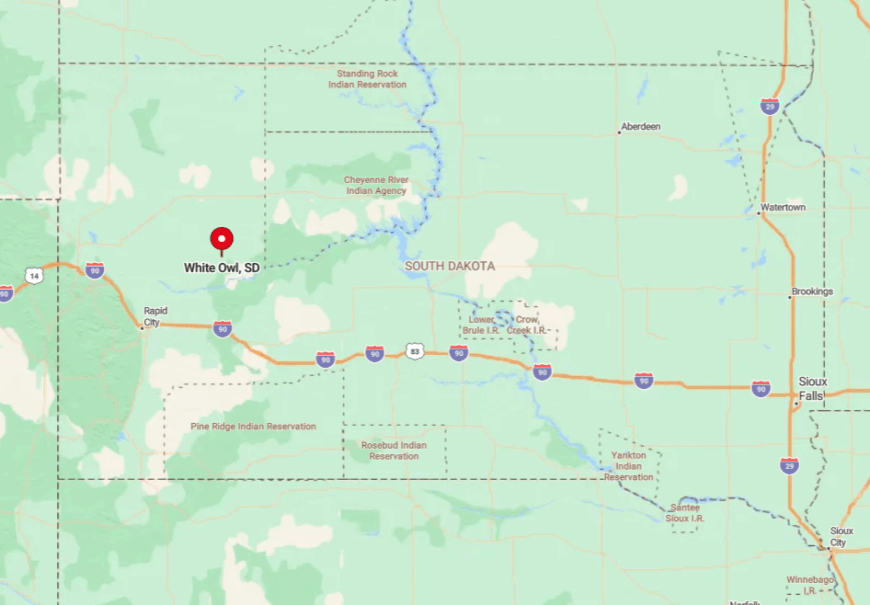
Located in Meade County, White Owl sits quietly along Highway 34, east of the Black Hills. Its remote setting far from urban centers enhances its secluded nature. The community is surrounded by vast stretches of farmland and open prairie, which contributes to its sense of peace and isolation.
Reaching White Owl involves a scenic drive through South Dakota’s rolling plains, making the journey as calming as the destination itself.
8. Faith’s Vast Horizons
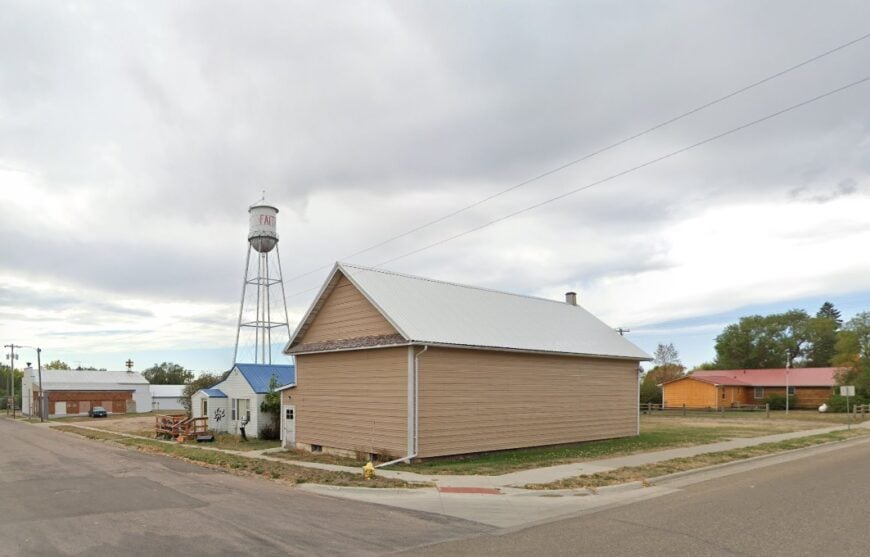
Faith is a small town with a population of around 400 residents, offering a close-knit community feel that’s hard to find in larger towns. I find its distant location from urban centers provides an unhurried pace of life, perfect for those wanting to escape the rush.
The town offers activities like fossil hunting—it’s famous for being near the discovery site of “Sue,” one of the largest and most complete Tyrannosaurus rex skeletons ever found. Agriculture, especially ranching and farming, drives the local economy.
What sets Faith apart is its expansive lot sizes and the sweeping horizons that make you feel like you have the world to yourself.
Where is Faith?
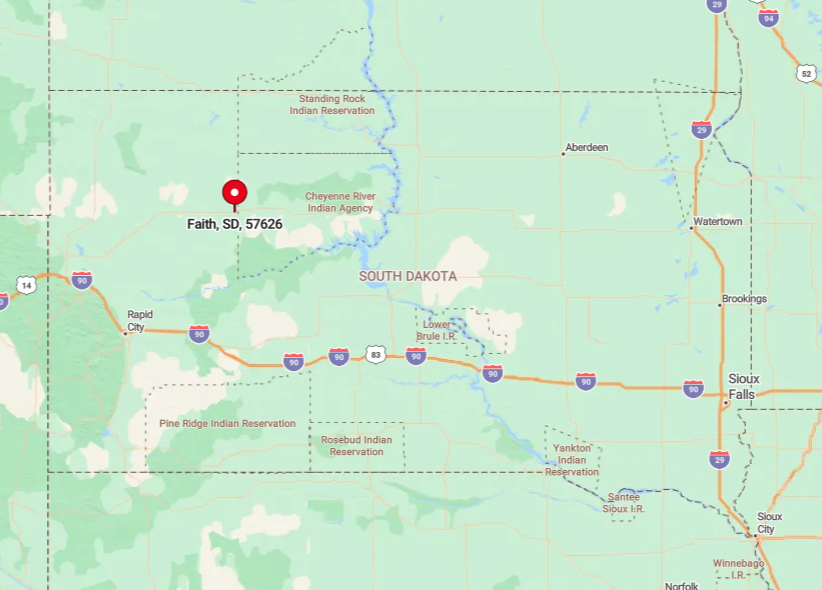
Faith is located in Meade County, near the junction of Highways 212 and 73. Its remote position in the vast prairie lands contributes to its status as a secluded haven.
The town is quite a distance from South Dakota’s larger cities, reinforcing its tranquil ambiance. To reach Faith, you’ll enjoy a long drive through picturesque landscapes, allowing you to unwind even before you arrive.
7. The Serenity of Timber Lake
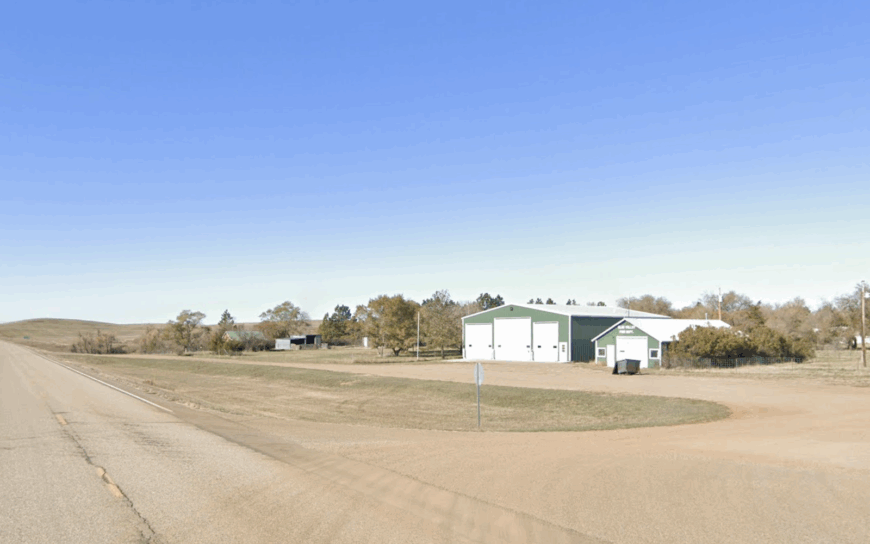
With a population of approximately 500 people, Timber Lake is a peaceful town that offers a quiet and undisturbed lifestyle. I admire how it’s nestled amidst natural barriers like rolling hills and the nearby Timber Lake itself.
Outdoor activities include fishing, boating, and exploring local trails that provide breathtaking views of the surrounding areas. The main industries here are agriculture and some tourism, thanks to its natural attractions.
Timber Lake’s low population density and serene environment make it an ideal spot for those looking to escape the noise of city life.
Where is Timber Lake?

Timber Lake is situated in Dewey County, on the Cheyenne River Indian Reservation. Its location amid natural landscapes adds to its sense of seclusion. The town is quite distant from major highways, which helps maintain its peaceful atmosphere.
Getting there involves traversing through scenic rural roads, allowing you to fully appreciate the beauty of northwest South Dakota’s countryside.
6. Prairie City: Solitude on the Plains
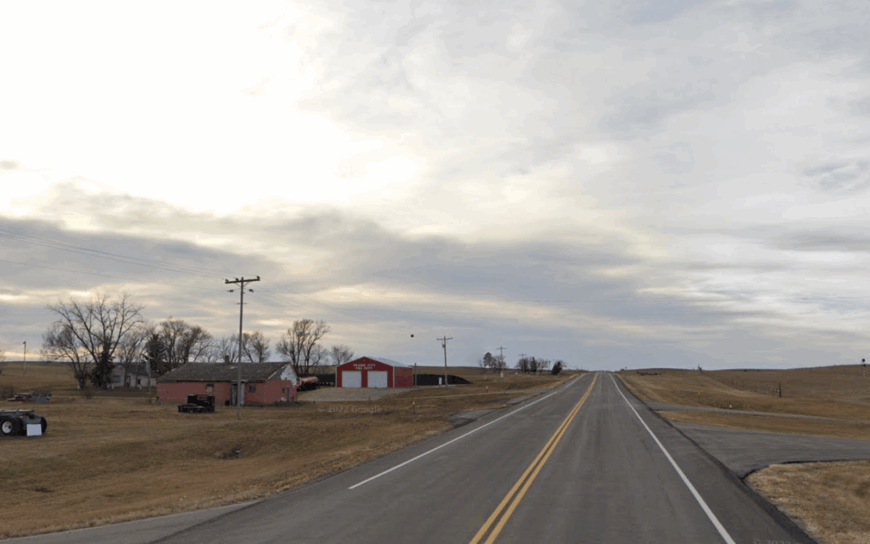
Prairie City is a small, unincorporated community that epitomizes solitude on the plains. With a sparse population, I find it offers a level of peace that’s increasingly rare these days.
The area is characterized by minimal development and expansive open landscapes, ideal for uninterrupted reflection or stargazing under vast night skies. Agriculture is the primary industry, with local ranches and farms spread out over the rolling terrain.
What makes Prairie City truly secluded is its isolation from major highways and urban centers, providing a quiet haven away from it all.
Where is Prairie City?
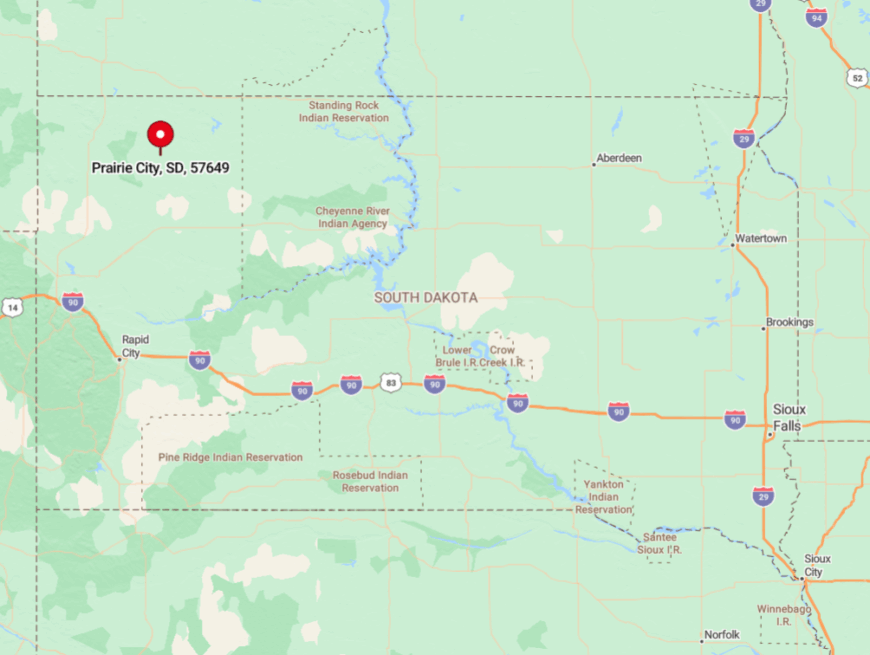
Located in Perkins County, Prairie City sits near the North Dakota border, enhancing its remote feel. The community is accessible via smaller county roads, which contribute to its isolation.
The surrounding area is dominated by grasslands and farmlands, reinforcing the sense of solitude. To reach Prairie City, you’ll navigate through serene rural landscapes, making the journey as peaceful as the destination.
5. Camp Crook: A Tranquil Frontier
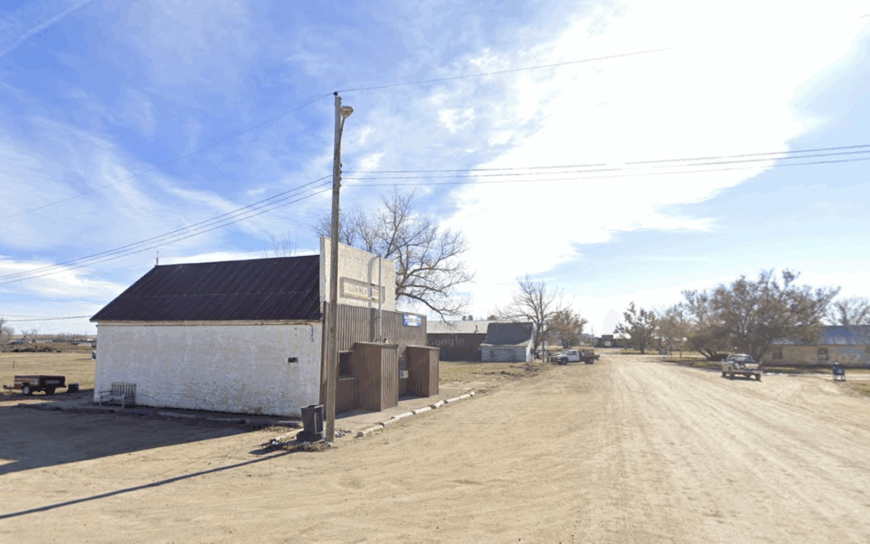
Home to around 60 residents, Camp Crook offers a glimpse into the tranquil frontier life. I enjoy its remote setting near the Montana border, surrounded by forests and rolling terrain that are perfect for outdoor adventures like hiking and wildlife spotting.
The community has a rich history as a former cavalry camp, adding a touch of the Old West to its charm. Ranching remains the main industry here, with vast expanses of land dedicated to cattle grazing. Camp Crook’s seclusion is heightened by its distance from major towns and the natural beauty that envelops it.
Where is Camp Crook?
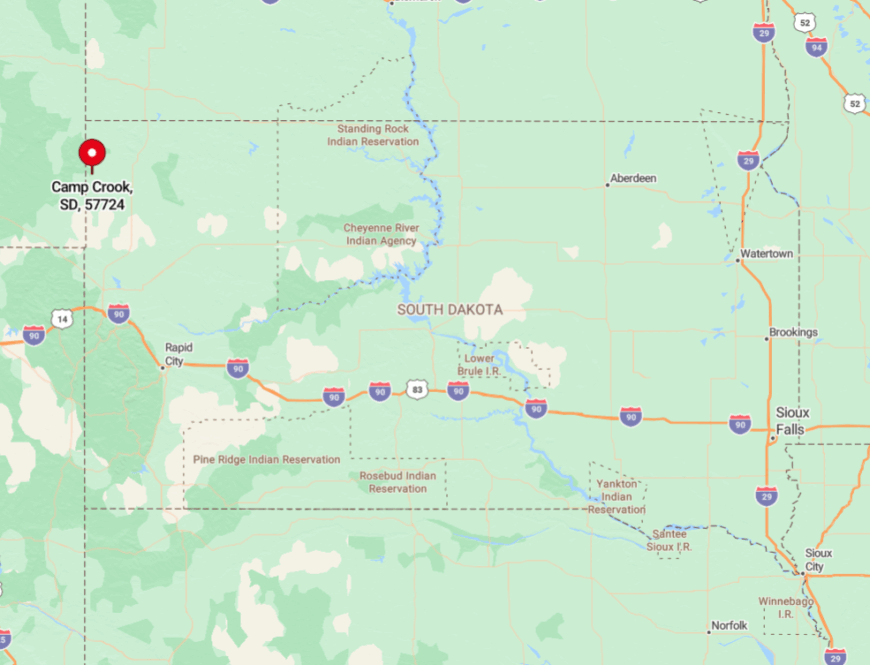
Camp Crook is nestled in Harding County, right along the Little Missouri River. Its proximity to the Custer National Forest adds to its secluded and rugged appeal. The town is accessed via Highway 20, but it’s far from any major thoroughfares, enhancing its peaceful atmosphere.
Traveling to Camp Crook means journeying through some of South Dakota’s most pristine landscapes, offering a true escape into nature.
4. The Remote Beauty of Isabel
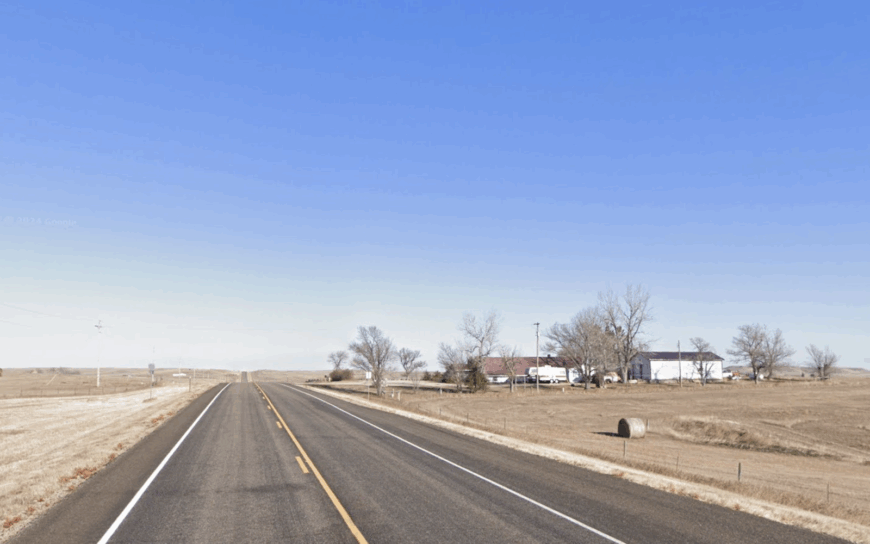
Isabel is a small town with a population of around 135, offering a serene environment ideal for those seeking privacy and a connection with nature. I appreciate its sparse housing and the tranquil surroundings that make it a peaceful retreat.
The town provides opportunities for fishing and boating at the nearby Lake Isabel, as well as hunting in the surrounding areas. Agriculture is a significant industry here, with local farmers and ranchers contributing to the community. Isabel’s secluded nature comes from its remote location and the natural beauty that encompasses it.
Where is Isabel?
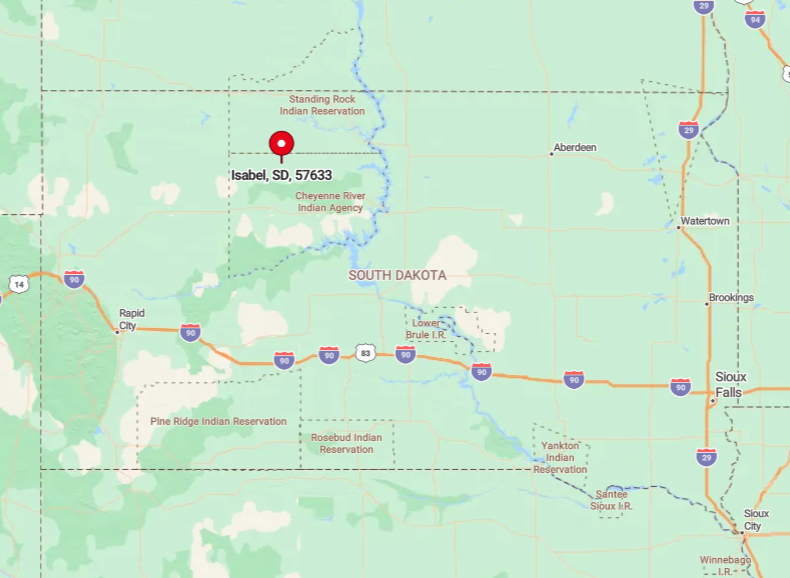
Situated in Dewey County, Isabel lies within the expansive Great Plains of South Dakota. Its location away from major highways and urban areas adds to its sense of isolation.
The town is accessible via Highway 65, but you’ll find that the journey takes you through miles of open countryside. Reaching Isabel is a peaceful experience in itself, as you leave behind the noise and distractions of busier locales.
3. Lemmon’s Artistic Solitude
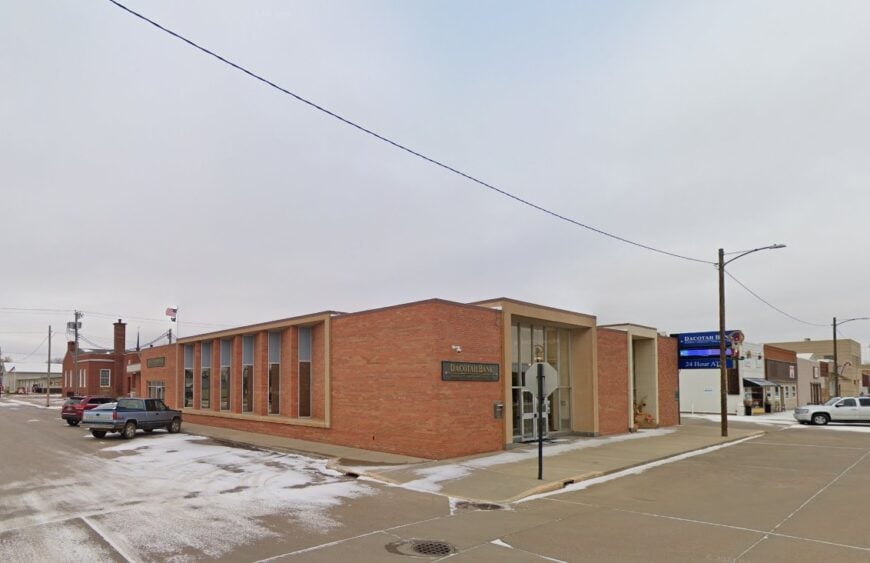
Lemmon, with a population of approximately 1,200, combines seclusion with cultural attractions that make it truly unique. I am always drawn to the Petrified Wood Park and Museum, an artistic marvel constructed entirely of petrified wood, fossils, and stone.
The town is set amidst rolling hills far from bustling centers, offering a peaceful ambiance. Agriculture and ranching are key industries, along with a touch of tourism due to its unique attractions. Lemmon’s blend of art and solitude provides a quiet haven with a creative twist.
Where is Lemmon?
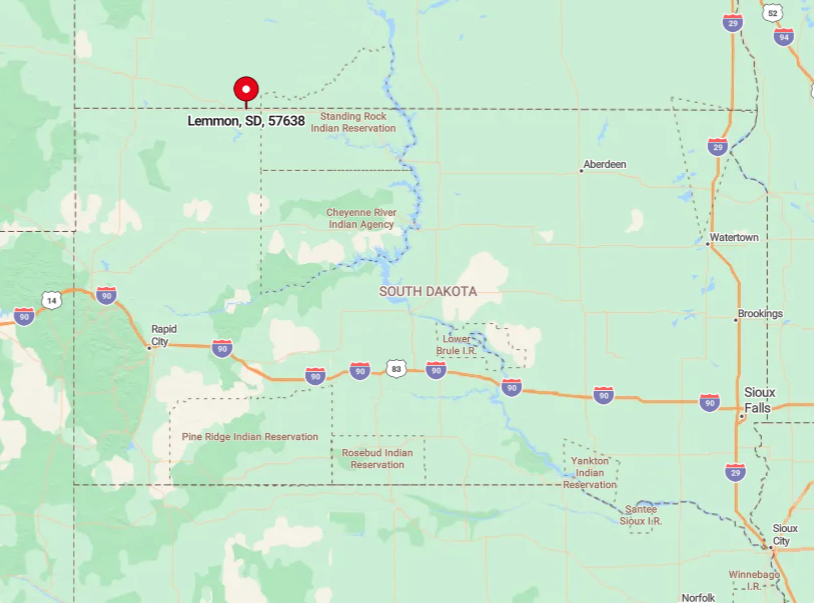
Lemmon is located in Perkins County, right on the border with North Dakota along Highway 12. Its position far from major urban areas enhances its secluded feel. The surrounding landscape of prairies and hills contributes to its tranquil atmosphere.
To get to Lemmon, you’ll travel through the scenic northern plains, making the journey a pleasant prelude to your visit.
2. Hidden Gem: Bison’s Expansive Landscapes
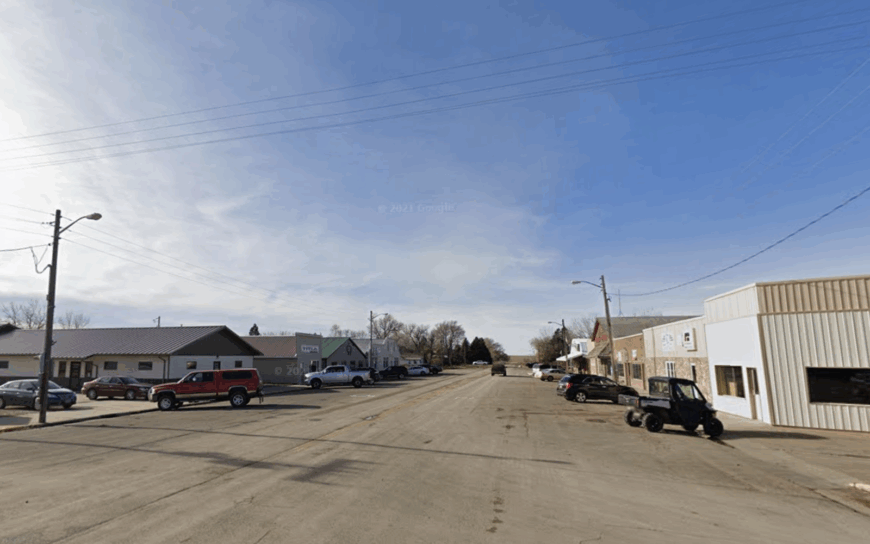
Bison is a small town with a population of about 330 people, characterized by its large lot sizes and open spaces. I find its peaceful ambiance perfect for those seeking an escape into solitude.
The town offers a quiet lifestyle with opportunities for hunting, fishing, and exploring the vast landscapes that surround it. The main industries include agriculture and ranching, reflecting the community’s deep-rooted connection to the land.
Bison’s distance from major cities makes it an ideal spot for those looking to unwind in a serene environment.
Where is Bison?

Located in Perkins County, Bison sits along Highway 20 in northwest South Dakota. Its remote location far from urban centers enhances its secluded character. The surrounding terrain is predominantly prairie land, offering expansive views and a sense of openness.
Traveling to Bison involves a drive through the heart of the Great Plains, providing a tranquil backdrop for your journey.
1. The Quiet Charm of Buffalo
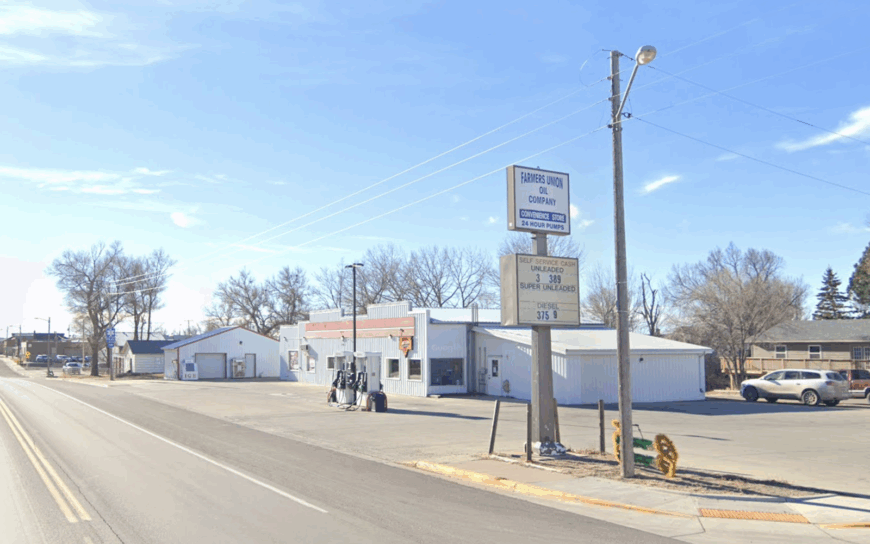
Buffalo is a small town with a population of around 330, serving as the county seat of Harding County. I am captivated by its quiet charm and the vast surrounding prairies that epitomize the tranquility of rural life.
The town offers simple pleasures like community events, local diners, and access to outdoor activities such as hunting and hiking. The main industries are ranching and agriculture, reflecting the area’s deep ties to the land.
What makes Buffalo so secluded is its remote location and the expansive natural landscapes that provide a serene escape from urban living.
Where is Buffalo?
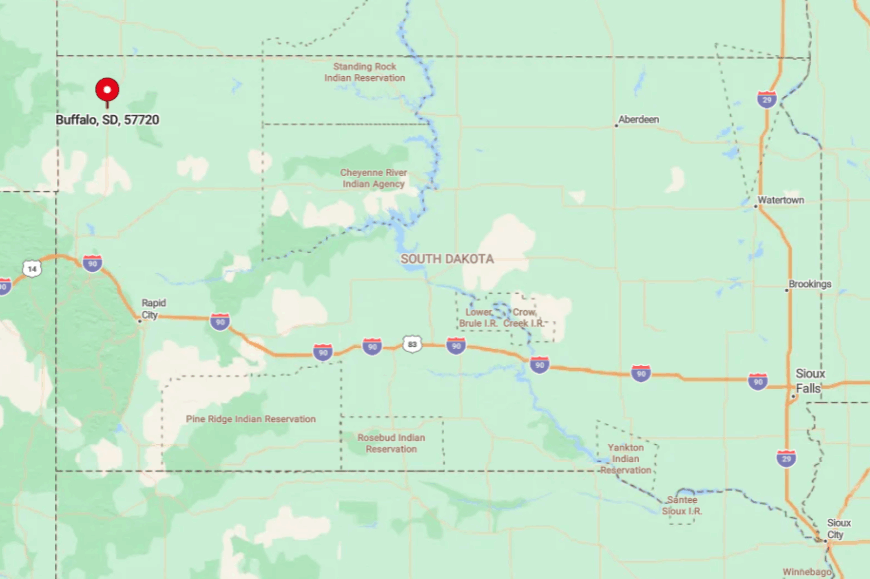
Buffalo is situated in the far northwest corner of South Dakota, near the junction of Highways 85 and 20. Its distance from larger cities contributes significantly to its secluded atmosphere.
The town is enveloped by rolling prairies and open skies, enhancing its peaceful vibe. Reaching Buffalo involves a journey through some of the most picturesque and undisturbed landscapes in the state, making it a destination for true solitude seekers.



